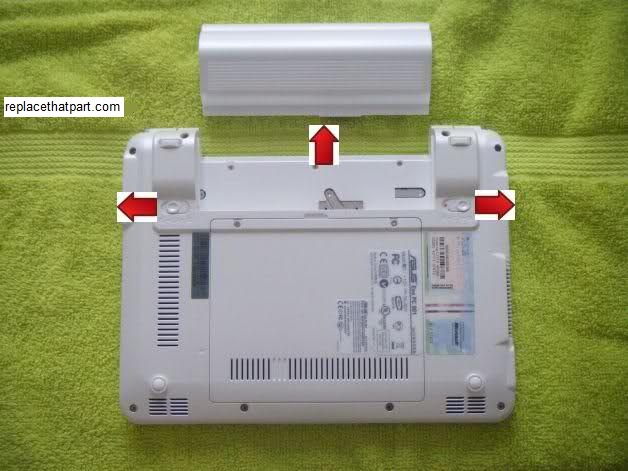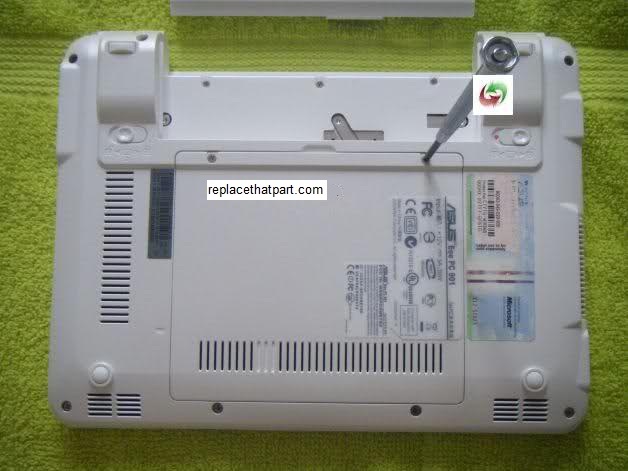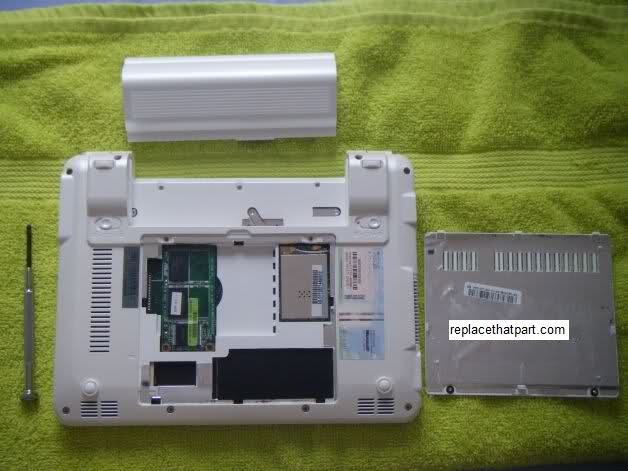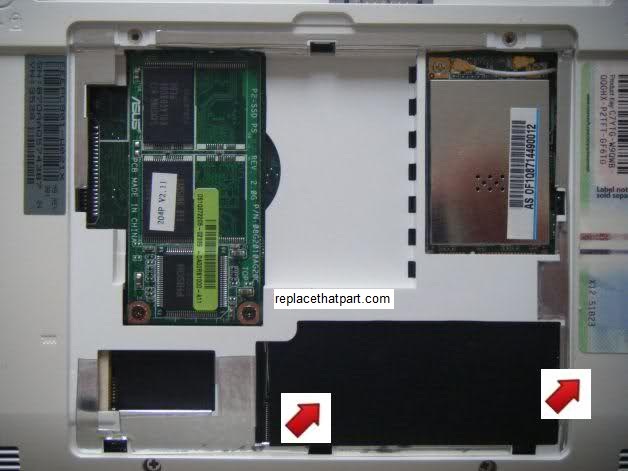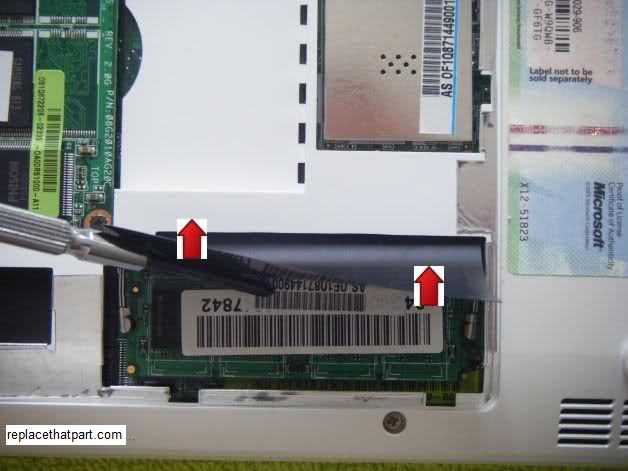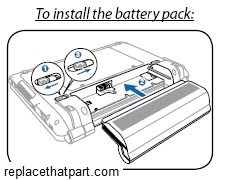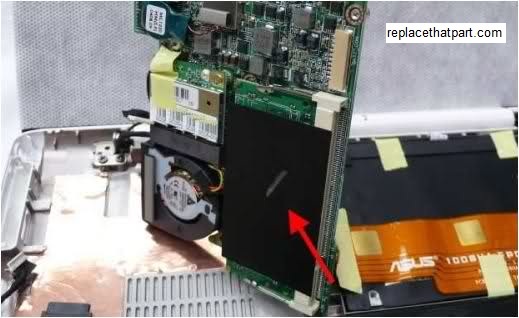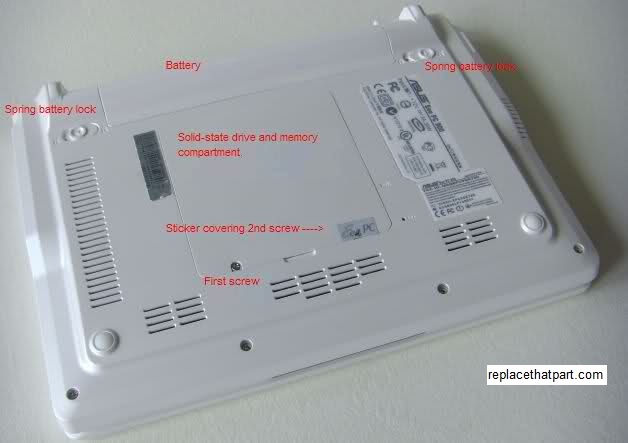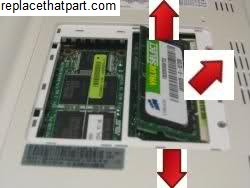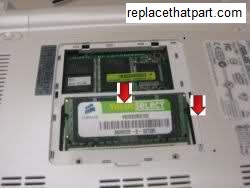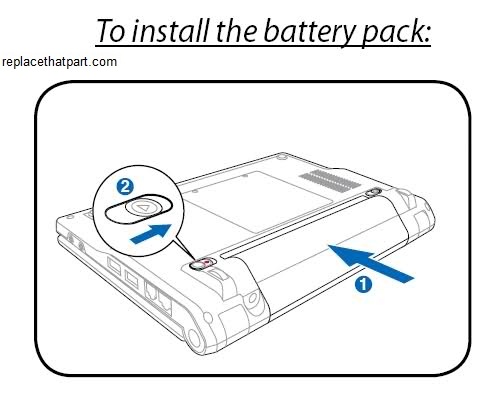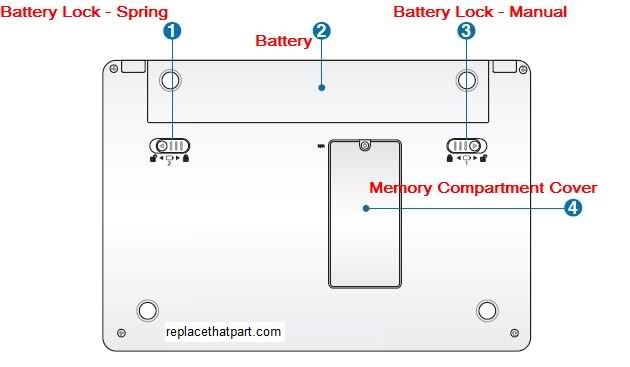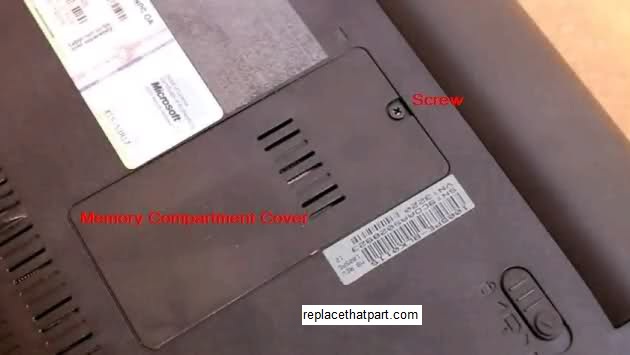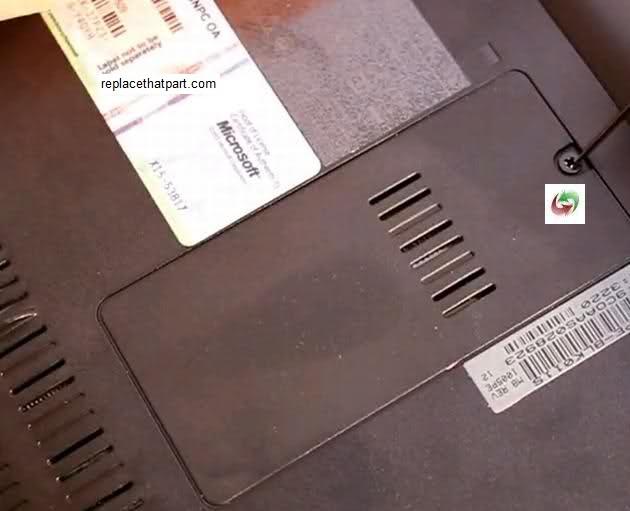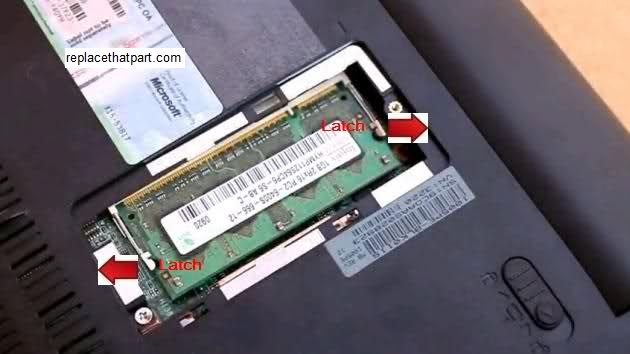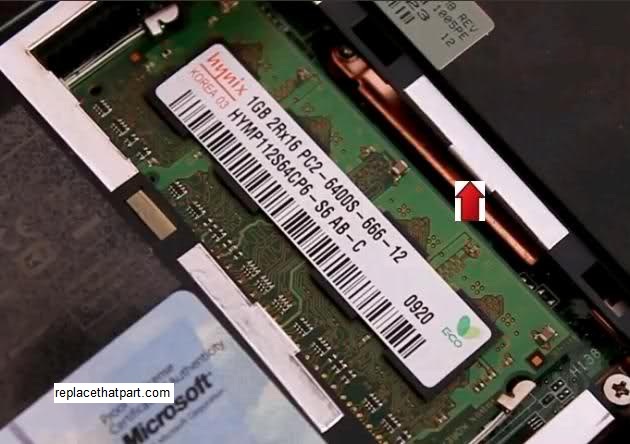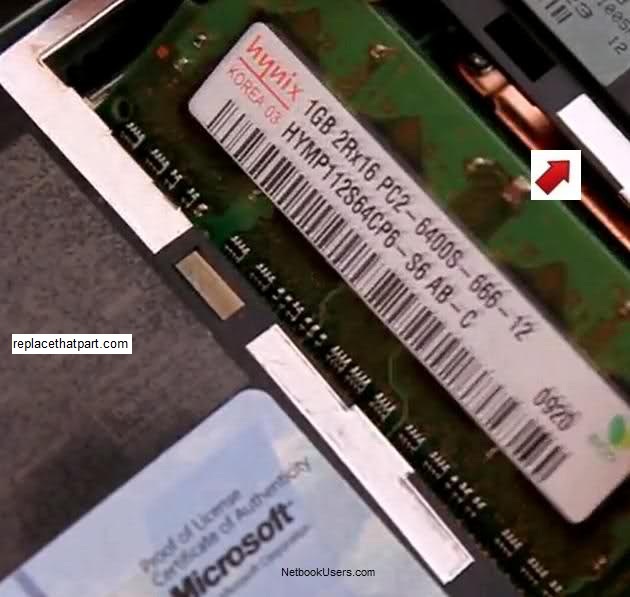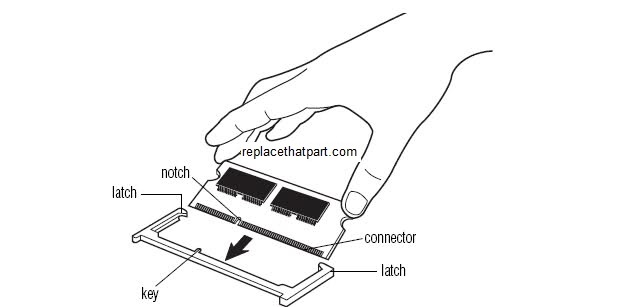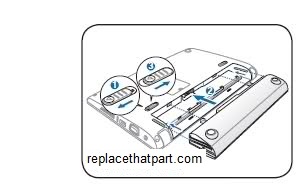A computer memory upgrade is often the best value for increasing overall computer performance, and upgrading netbook memory is also one of the easiest computer upgrades. Do you want to get a little more power out of your ASUS Eee PC 901 Netbook? Upgrade that 1GB memory module with a 2GB SODIMM. It will speed up opening new applications, running multiple applications at once, and switching between software applications (multi-tasking). Here’s a complete and easy guide on how to upgrade your Eee PC’s memory.
Purchase the right memory. For your ASUS Eee PC 901 Netbook you need a standard 200 pin DDR2 SODIMM laptop memory module (not desktop memory). Select a 2GB DDR2 SODIMM memory module of 667MHz (or 533MHz). These may be referenced as PC-5300 (or PC-4200). Recommended brands include, but are not limited to, Crucial, Corsair, Kingston, Patriot, and Viking.
(#ad or paid links)
- Crucial 2GB Single DDR2 667MHz (PC2-5300) CL5 SODIMM 200-Pin Notebook Memory Module CT25664AC667
This is by far the most popular Netbook memory replacement at the moment. - Corsair VS2GSDS667D2 2GB (1x2GB) DDR2 667 MHz (PC2 5300) Laptop Memory
A memory module is installed in the memory slot at the bottom of your computer. There is, however, only one memory slot on the motherboard so this means that you’ll have to remove the current RAM module in order to insert a new one. The procedure to replace the memory is described below.
1. Shut down the computer completely.
2. Power off your Eee PC if it’s on. Also, unplug the AC power adapter.
3. Prepare your Eee PC by placing it upside-down on a flat surface with some form of soft padding. Static electricity can damage your module and other computer parts. Make sure that you are working in a static-safe environment. Remove any plastic bags or papers from your work space.
4. Remove the battery. This will prevent you from accidentally shorting anything on the system board during this process. The spring battery lock keeps the battery pack secure. When removing the battery pack, this spring lock must be retained in the unlocked position.
5. Discharge residual power by pressing the power button.
6. Be sure to ground yourself. Touch something metal for a couple of seconds and you should be fine.
7. The solid-state drive and memory are secured in a dedicated compartment. Remove the Memory compartment cover.
a. Remove the screws that secure the compartment cover.
b. Remove the compartment cover.
8. Pull the little piece of black plastic which covers the SODIMM up.
9. Press outwards on the latches on both edges of the socket at the same time, remove the SODIMM; it should pop right out. Be sure to save the old SODIMM for future use.
10. Most memory will be sold in a piece of hard, clear plastic. Gently remove the new module from the packaging by pressing on it from the plastic side. Avoid bending the module or applying too much force to the packaging. When you remove the SODIMM memory module from its packaging hold it by the edges, try not to touch the gold colored contacts as this can damage the memory.
11. Insert the notched end of the DIMM into the socket. This is important; you want to stick in the new memory module at a 45 degree angle. Press the DIMM firmly, and pivot it until it snaps into place.
12. Make sure that it is firmly fixed in the slot and does not move easily. If the memory does not fit easily, take it out and try again. The module should be seated so that you don’t see any of the gold contacts.
13. Test it. Before you close your case, replace the battery. When the battery pack is inserted, it will automatically lock. Turn your computer back on. The BIOS automatically detects the amount of memory in the system and configures CMOS accordingly during the Power-On Self-Test (POST) process. There is no hardware or software (including BIOS) setup required after the memory is installed. You should see the new amount of memory displayed on your startup screens or in the properties for “My Computer”.
14. If everything works correctly, you are done and you can reinstall the memory compartment cover. If you have any problems, go to step 15 for troubleshooting tips.
15. Troubleshooting. If you have trouble with your new RAM, check these things first. Check the power cords. Is everything plugged in properly? Check the module. Try removing the module and replacing it to make sure it is seated properly in the slot. If you’re still having difficulties with your RAM, check the Crucial FAQ section. You may find an easy solution for your problem.
16. Close the Hard Disk Drive/Memory compartment cover.
Enjoy!
